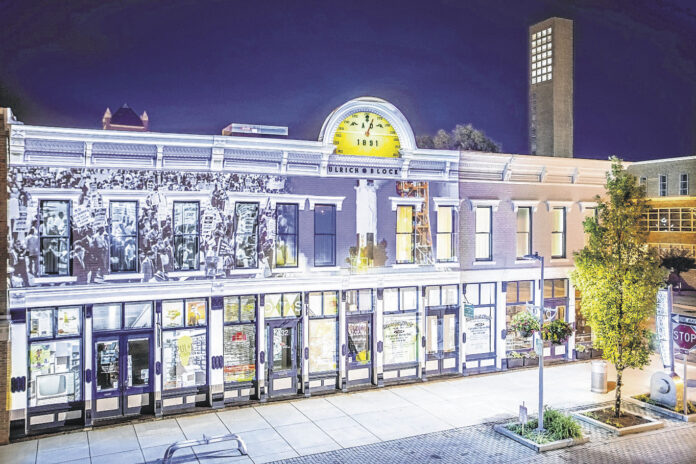
Shedding some light on local history
Not all of the events surrounding the Mill Race Marathon are just for runners.
Some of the festivities leading up to race day can be enjoyed by the entire public — whether they’re planning to cross the finish line or not.
The Columbus Board of Works recently approved a request to close part of Fourth Street for a custom projection mapping show planned for Sept. 23 and 24.
The show, titled “200 Years Together: Our Stories Illuminated on 4th Street,” will be an “immersive” experience highlighting the city and county’s past, present and future. The bicentennial steering committee commissioned Blockhouse Studios for the show, which will be projected on the Ulrich Building downtown.
We’ve seen some snippets of the project, and can assure you this is a show you won’t want to miss.
Kudos to all those working together to put on this amazing display.
Let the games begin
For the next 15 days, the entire world will have its eyes on one city: Tokyo.
The Olympics kicked off in Japan last night with opening ceremonies, and will continue through Aug. 8.
A Columbus connection is among those representing Team USA, as native Michael Brinegar will compete in a pair of events in the pool next week.
The Indiana University swimmer will race in the heats of the 800 freestyle July 27 and the 1,500 on July 30. Finals are set for the days after each heat race, with the top eight finishers making it to the second day of swimming.
We wish Brinegar well in his adventure, and look forward to documenting his journey as he aims to bring hardware back to the Hoosier state.
An economic boost?
Purse strings are starting to loosen a little for local families still struggling financially from the pandemic.
The first of six monthly payments of up to $300 per child via the Child Tax Credit started rolling out on July 15. The payments are part of President Joe Biden’s $1.9 trillion coronavirus rescue package, which has temporarily increased the child tax credit for one year.
The expanded tax credits aim to reduce child poverty, provide support to families affected by the pandemic and parents forced to cut down on work or give up jobs to take care of children after losing access to child care. This could have a big impact locally, as it was estimated that 21% to 25% of children lived below the poverty line in Bartholomew County in 2019.
While it’s unclear exactly how many Bartholomew County families would qualify for the expanded credits, child and other dependent tax credits were claimed on nearly 10,000 local tax returns in 2018.
In addition to fighting child poverty, the influx of cash could give the local economy a boost as more individuals will have money to spend — a benefit to everyone.




